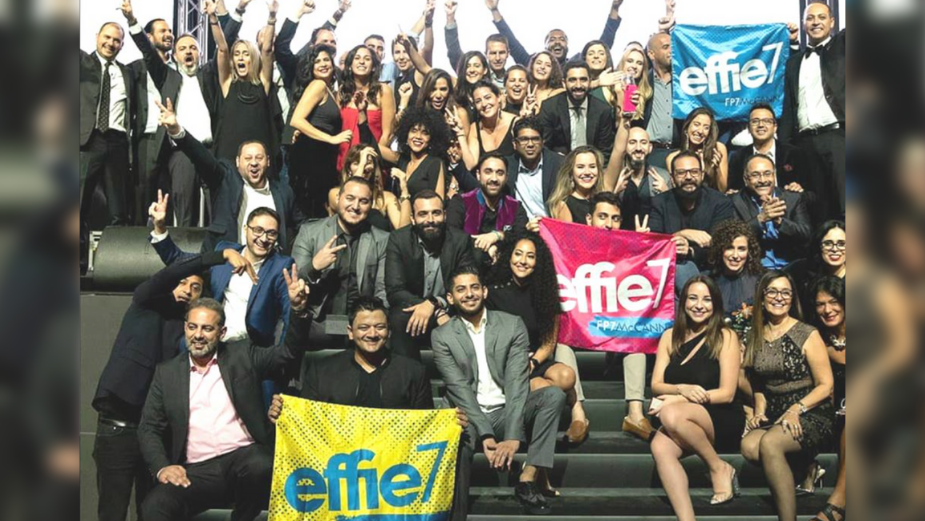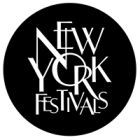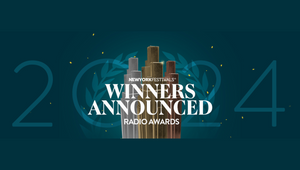
“Art On A Wall Isn’t Going to Help With Bottom-Lines or Growth. We Need to Sell That Art”

AME Awards, the effectiveness focused award show from New York Festivals, has partnered with Little Black Book to sponsor the Awards & Events channel. This channel is a place for general news about award wins and any events being held, but it's also a place to discuss the trends impacting and changing award shows, such a prevalent part of our industry.
As part of this partnership, we'll be interviewing some of the advertising industry's brightest minds and most revered leaders on the meaning of effectiveness in 2021, the advertising awards landscape of the future, and just about anything and everything that might come up along the way. In this interview, we speak with Tahaab Rais, President - SLC and Regional Head of Strategy & Truth Central at FP7/McCann Worldgroup MENAT.
LBB> What does "effectiveness" in advertising mean to you?
Tahaab Rais> Effectiveness, in our industry, in my books, is quite simply the impact of creativity. As a fan of tinkering around creating models of thinking, I’ve deconstructed effectiveness and creativity campaigns over the past 20 years and remodelled them into 25 archetypes. And across those archetypes, I’ve noticed there are some common ingredients:
- A problem that demands creativity and is enviable (“wish I could have the chance to solve that”).
- A human truth that resonates and is surprising.
- A goal that’s transformational for the brand in the category and/or the culture.
- An idea that moves people and is enviable too (“wish I’d done that; I’d have done that better!”).
- A great team effort to bring an idea to life.
- Execution at scale, following a well-defined, data-driven mapping.
- Results that matter - demonstrating impact on people, showing influence on culture, key brand attributes and on commercial growth.
LBB> How has the definition and measure of effectiveness changed over the years?
Tahaab> What makes creativity effective hasn’t changed and shouldn’t change, despite new emerging platforms coming up with all sorts of new things to measure. As an industry, effectiveness has always been about and should always be about the “impact metrics” i.e. creativity that positively impacts people, culture, the brand and the business.
It’s the specific measures under those metrics that have evolved - with more platforms that content is being created for, more platforms where the content earns organic expansion and the increasing ability for us to monitor and measure the consumer journey more accurately with improved tracking technologies.
LBB> An IPA report suggested that award-winning work is becoming less effective. Why do you think that is?
Tahaab> Couple of reasons. Firstly, it’s quite honestly (and unfortunately) because most people in the industry still see “creativity” and “effectiveness” awards as separate from each other. In truth, they are and should be one and the same thing. I’ve been on “creative” festival juries where, at times, the results aren’t really questioned nor interrogated for context, and the focus remains on the idea alone believing results on face value. At times, work with weaker real-world impact gets rewarded, as a result. And I’ve been on “effectiveness” award juries where, at times, the objectives, insight and results take precedence over the creativity and the brilliance of the execution. Work with weaker creativity gets rewarded, as a result.
If we ensured “award-winning” work was brilliant AND had real impact, it’d be a good step in the right direction. One simple way to achieve that is to have juries that have strategists and creatives across award shows. Balance the magic with a little logic and bring a little magic to the logic.
Secondly, as an industry, we just need to get better at how we get the right problems and KPIs from brands and make sure those problems and KPIs are embedded into the brief, are addressed with the work we do, and are measured and monitored when the work’s out in the market. Not enough is done on all three fronts. Not as much as it should be.
LBB> In your personal opinion, what have been some of the most effective ads to date?
Tahaab> Gosh, there are so many! I love it when creativity lands and then expands. So, my preference, strategically, always skews towards creativity that is impactful immediately, but is innately enduring.
If we look at the work done for Mastercard over the years, it’s an effective brand ideology (versus just a campaign) and several of the brand’s campaigns and initiatives, over the years, have helped land and expand that ideology. If we look at Snickers, they’ve done that brilliantly too. The same goes for the likes of Coca-Cola and Nike globally, among so many global brands that have become enduring because of a persistent focus on brilliant creativity that’s meaningful, hence, effective.
LBB> How can we bring the effectiveness value back into advertising? And why is this important?
Tahaab> As a creative industry, we love art and creating art. But art on a wall isn’t going to help with bottom-lines or growth. We need to sell that art.
The agency that I lead the strategy office for, has been the #1 ranked agency and network in the MENA region since 2013 in the Effie Index, in the top 4 for the past seven years in the Global Effie Index (including #1 globally in 2016 and 2020), and #1 Globally in the WARC Effective 100.
This is from an agency in the Middle East - a relatively “smaller” part of the world, globally. And I’m not sharing that to show off how good we are. I’m sharing that because it serves as the proof about how changing an agency’s culture to being more focused on creativity that’s meaningful, hence, effective, is important.
We’ve done the simple things well. For example, we’ve made it a mantra to think about the “effectiveness case study” when writing the brief. When we do that right, this little mindset shift helps give scale to the work. And that work wins in the real world and at award shows. We insist to put the connections plan in the brief. This helps make sure the work being executed is thought through to help achieve the objectives. We have the KPIs in our briefs, so it’s very clear what the work coming out from that brief is meant to achieve. We monitor every possible KPI under the four metrics I mentioned earlier – people, culture, brand, business. These little changes have helped us on a process-level. And I hope they help anyone reading this too.
Then, on an industry-level, we need to have more clients ensure they have their KPIs set for themselves, for the short-term but also for the long-term, and to communicate those KPIs in their briefs. This will help ensure agencies know what their work needs to deliver against and serve as a reminder that we are in the business to help grow our client partners’ business.
LBB> What are your views on this past year of advertising through Covid? Do you feel that it will have a lasting impact on the industry?
Tahaab> It hasn’t been an easy year. We have to empathise with our clients when showing them the value of creativity i.e. its effectiveness. They have short-term goals and targets that they need to achieve to ensure their job security and their growth as individuals. So, we should help them achieve those goals and targets. By doing so and earning their trust, in parallel, we need to also work with them and nudge them along towards the long-term i.e. the endless immensity of the sea. Because a crisis also provides opportunities to learn and get better.
On an industry level, a recent report shows that 47% of sales contribution comes from the creativity and emotion of the marketing – the single biggest factors. So, while #SocialMediaChallenges or data-driven targeting or social content might be relevant and cool - and achieve short-term, short-sighted metrics - we need to remind brands about their value as brands when they earn a meaningful role in people’s lives.
Research proves that the more people find a brand meaningful, the more they buy from it. This past year has taught us the importance of a meaningful role vs. the oft-ruminative brand purpose. “Purpose” has often (wrongfully) been construed to be about changing the world. A meaningful role (rightfully) gears us to think how we can help people, every day, in their lives through what we do as a brand. This means not just an active role of the brand but also an active role of the product.
In the world ahead, brands are going to have to help people live a better life every day through products, services, experiences, partnerships, new channels, across their ecosystem. Living up to the brand’s meaningful role in everything a brand does is not just a nice-to-have anymore. It’s a business imperative.
LBB> The awards landscape has changed dramatically over the past year. What are your thoughts on the future of awards?
Tahaab> Awards matter. In any industry, awards serve two purposes. They recognise performance and achievements of teams and individuals. And importantly, they set the path for what’s ahead.
In our industry, award shows have increasingly been seen to introduce new categories that help point the industry towards where it should be heading. And it’s encouraging to see categories involving commerce, esports, data, strategy, entertainment emerge. It’s great to see categories like print and posters reduce in their number of entries because they are just not as relevant anymore - except at award shows.
So, my hope for award shows in the very near term, is to continue to be the goalposts for the industry. Challenge us by reducing (and even eliminating) categories that are just not relevant to today’s constantly evolving world. Inspire and guide us by introducing categories that are relevant and meaningful, so we can create more work that matters.
LBB> What advice do you have for creatives looking to create award-winning work of the future?
Tahaab> Firstly, don’t aim to do great work to win awards. Aim to do great work to make a statement for brands, to stand up for people and to help people, and to influence culture. And the awards will come. Awards are and should always be seen as the result of great work, not the reason why great work is made.
Secondly, look at the new categories being introduced by award shows. Use those categories to inspire the kind of creativity we need to achieve with our brands. I love categories such as creative effectiveness, creative data, creative business transformation, entertainment, creative e-commerce, gaming and the like that are being introduced into various festivals. If the creative industry produces more work that once done can be entered into those categories, then, we will all be in a much stronger space.
And thirdly, intend to do work that solves challenges for brands and their business. And if it’s for a cause, do it sincerely and sustainably. Anything else isn’t worth our creative talent nor our creative effort.
LBB> Anything else you would like to add?
Tahaab> Great creative work is effective because it’s creative, and the most effective work is effective because it is creative. The two are seen differently, even today, across the industry. Let’s stop seeing them differently.










